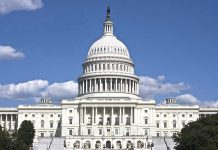
When a fabricated poster featuring Kid Rock and a fictional performer named “Measles” managed to fool a swath of the internet, it exposed the vulnerabilities in how we consume information today.
Story Snapshot
- A fake poster promised Kid Rock and “Measles” at a TPUSA event.
- The hoax highlights online communities’ susceptibility to misinformation.
- TPUSA has announced a halftime show but no performers.
- Fact-checkers quickly debunked the viral misinformation.
The Viral Hoax Unveiled
A digitally crafted poster made waves when it falsely advertised a Turning Point USA (TPUSA) Super Bowl halftime show featuring Kid Rock, Ted Nugent, and a mysterious act named “Measles.” This hoax, circulating captivated many on social media, particularly in conservative circles. Despite no official announcements from TPUSA or the NFL, the poster’s allure proved powerful, underscoring how easily misinformation can spread during high-profile cultural events.
As the fake poster gained traction, TPUSA announced its “All American Halftime Show” without naming any performers. This left room for speculation and rumors to flourish, further fueled by the poster’s viral nature. Fact-checkers and media outlets soon intervened, debunking the claims and clarifying the absence of any official performer announcements by TPUSA.
The Context Behind the Hoax
TPUSA, known for its counterprogramming efforts against mainstream cultural events, became an unwitting participant in this misinformation saga. The controversy began with the NFL’s choice of Bad Bunny as the official Super Bowl halftime performer, a decision met with mixed reactions from conservative audiences. TPUSA’s announcement of an alternative halftime show set the stage for the hoax to take root and spread.
An unreal number of MAGA influencers are falling for this fake TPUSA Super Bowl half time show flyer that promises a “guest appearance from Measles.” pic.twitter.com/Y96zRuDFuJ
— Will Sommer (@willsommer) October 12, 2025
The incident is not an isolated one. Similar hoaxes have previously targeted celebrity performances, exploiting the ongoing culture wars surrounding entertainment. This fake poster is a reminder of the challenges posed by AI-generated content and the rapid dissemination of false narratives in digital spaces.
Stakeholders and Reactions
The main players in this unfolding drama include TPUSA, the NFL, and the falsely attributed performers. TPUSA, seeking to promote conservative values, inadvertently became a focal point for the spread of misinformation. Meanwhile, the NFL and Bad Bunny found themselves at the center of unfounded rumors and criticisms.
Social media platforms amplified the hoax, outpacing official corrections. Influencers and meme accounts further fueled the fire, highlighting the power dynamics at play in the digital age. TPUSA’s leadership, including figures like Charlie Kirk, remain key decision-makers in navigating the fallout.
The Broader Impact and Lessons Learned
The hoax’s short-term effects included confusion among conservative social media users and increased scrutiny on TPUSA’s event plans. In the long term, such incidents erode trust in online information and deepen polarization around cultural events. The entertainment industry faces new challenges from viral misinformation, emphasizing the need for real-time fact-checking and media literacy.
Experts warn of the dangers posed by viral misinformation, particularly in highly partisan online communities. Media studies scholars highlight the role of confirmation bias in the rapid spread of unverified claims. This incident serves as a stark reminder of the digital age’s complexities and the importance of maintaining a critical eye when consuming information.













